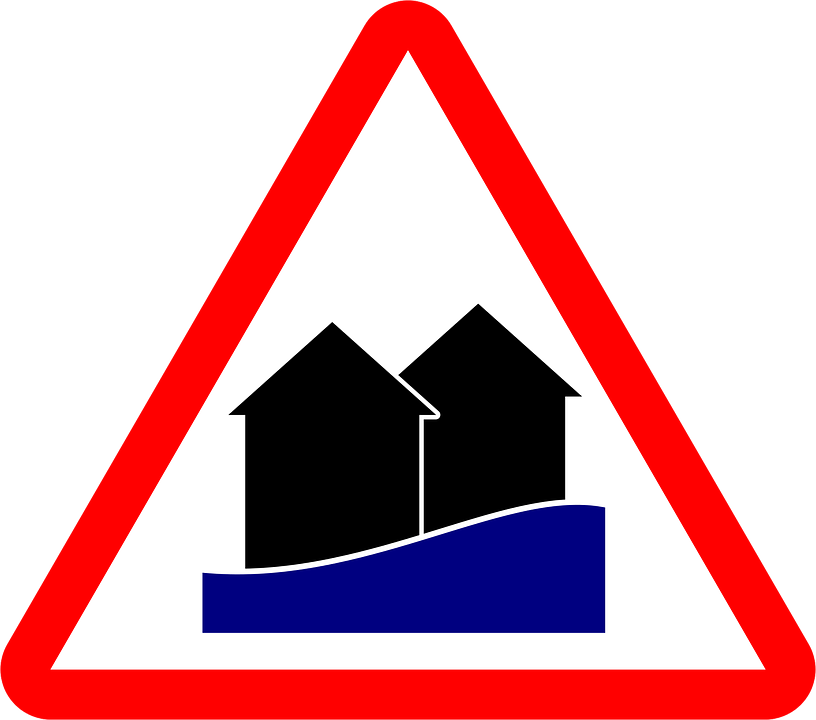According to National Geographic, floods are among Earth’s most destructive and common natural hazards.
More than 670 U.S. communities will face repeated flooding by the end of this century, according to a 2017 analysis; it’s happening in more than 90 coastal communities already.
An aerial view of your municipality or town from a satellite image will give you an impression that its layout has been designed without a plan due to its winding streets and certain areas allocated to constructions and others that are filled with forests or wilderness instead.
However, if you place a flood zone map next to it, it will become apparent why some areas are allowed for construction and others are not due to the fact that they are flood zones and hence unsafe for construction.
This does not guarantee that all homes that are constructed in these areas are on flood-free zones.
People sometimes risk building their houses on a flood zone as they give in to a fantastic scenic view. Moreover, shifting climate and recent construction constantly changes landscape and topography.
Since floods can be devastating and hazardous to your home it becomes imperative for you to find out whether your house is at risk of flooding due to it being constructed on a flood zone.

The following measures can be taken to assess if your house faces a risk of flooding and how to prevent it.
1. Try FloodTools.com
Floodtools.com is a user-friendly website to search your address in order to evaluate if your house is built on a location that has a greater risk of flooding.
Looking up your address using this tool will not only give you an up to date interactive map but will also provide additional options of illustrating past floods, flood plains and history of hurricanes that have previously effected your locality.
Another useful feature of this tool is to determine other possible flood risks close by such as dams and levees. Moreover, you have the option to shift between different map views like satellite view and terrain view.
Although, these tools are not meant to get precise information on flood zones, they provide useful insights on flood risks and hazards.
2. Determine Your FIRM or Flood Insurance Rate Map
In case you find troubling information on floodtools.com related to your home, as a second step visit the FEMA website and search your address to determine if your home is situated in a specified flood risk area.
This will result in a FIRM or Flood Insurance Rate Map for the location of your house. Although, it is a bit difficult to read information Flood Insurance Rate Map as compared to maps by Flood Tools, the information is valuable nonetheless.
The map will provide you with information on what your risk is in terms of flooding in a very simple language.
It will give information ranging from “Area of Minimal Flood Hazard” to a little more specific “0.2 PCT Annual Chance of Flood Hazard” as well as “Special Flood Hazard Area.”
The map consists of overlays as well that present precise floodplains.
Although, all Flood Insurance Rate Maps are dated, some date back to twenty years or more but this is nothing to be concerned about as they just indicate the time period when the map was accepted officially as the map for a specific area.
However, Flood Insurance Rate Maps are updated by LOMRs or Letters of Map Revision and they are published apart from the map.
The notes on those are present in the section titled “Changes to this FIRM” just over the map.
Click the “Dynamic Map” icon in order to view the LOMR revisions and bring about a FIRMette.
The FIRMette consists of updates and is an outline of the greater FIRM. This allows you to get a clearer picture of your property and the surrounding areas.
There’s also a useful printable PDF key to assist you in comprehending the overlays of the map.
3. Guard Your Property
What to do if you have discovered that your home is at a risk of flooding?
The first thing you need to do is to identify if your insurance covers floods. Although, according to FEMA, the likelihood of facing a flood is five times more than experiencing a fire in your home, unfortunately, nearly all homeowners’ policies do not include damage caused by flooding.
In order to know if you can acquire private coverage, speak to your insurance agent.
Coverage sponsored by the government through their National Flood Insurance Program or NFIP is also an option that you can find out more about.
National Flood Insurance Program has options of decreasing the cost of flood insurance which usually costs between $200 to $800 per year.
This is done by safeguarding your property against floods. In order to learn more about this program, visit FloodSmart.gov.
4. Use Technology
Installing flood sensors are a simple yet effective way to guard yourself and your property from the destruction caused by floods.
These inexpensive flood sensors help in timely detection of floods and hence help evade damage caused by floods resulting from the weather as well as floods caused by home appliances such as washing machines and water heaters.
5. Keep an Eye on Changes
Flood zones and floodplains keep changing due to fresh constructions and topographical changes overtime.
Every five years or so, make sure to check changes in your home’s flood zone designation. A handy tip for remembering to check these changes is to connect it to your milestone birthdays which means every time your age ends in a zero or five, you would know that it is time to check your property’s status in terms of floods by visiting FEMA.
